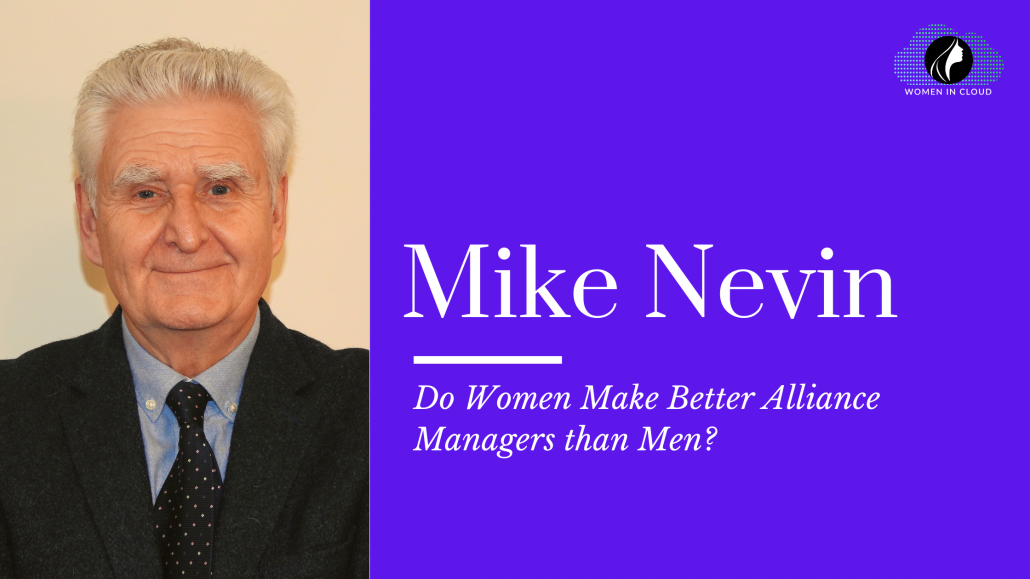
Recently, I was reminded of the book ‘Men Are from Mars, Women Are from Venus (1993)’ by the American author and Relationship Coach, John Gray. While facilitating an alliance workshop between two high-tech partners, I was reminded of a suggestion the book makes; there are incompatible differences between the way that men and women act in any given situation, and that conflict arises from these different viewpoints. One partner was a global systems integrator and consultancy; the other was an equally large (and global) software company. The workshop was to discuss the current state of the global alliance relationship that they had formed many years ago and reset the vision for the alliance.
Despite the number of senior key stakeholders at the workshop from both parties representing: product lines, consulting practices, sales, marketing, R&D, and corporate planning, the two global managers leading the discussion caught my attention. Experienced Vice Presidents in their respective companies, both responsible for managing global relations, the only obvious difference was their gender. For the purpose of this article let me call them Sally and Simon.
During the course of the workshop, we addressed the question of ‘Joint Business Value Propositions’, and I asked the question: “What is the Joint Business Value Proposition for this alliance? What is different and exciting to the customers about using the combination of both of your company’s products and services?”
Simon immediately jumped right in: “Well, it’s obvious right? Between us we control a large degree of market share in our chosen fields, we are both acknowledged leaders in our respective products and services, what I need is to agree on a target figure with Sally about how many of our software licenses her company will sell this year.”
Sally replied: “What are we trying to achieve with our offerings here? Between us, we need to understand better how we come across to the market and I’d like to know more about Simon’s business strategy and how my team can help him.”
Simon: “Great! That’s just what I said… now let me tell you in detail about my sales targets territory by territory around the world and we can then agree on what numbers you will allocate …!”
And before I could stop him he jumped up to the whiteboard and started doing just that!
The incident put me in mind of the Mars versus Venus debate sparked all those years ago.
If one is to consciously observe and compare the language that Simon is using, which is, ‘me, I, my targets, my objectives, my territories’ to Sally’s conversation which is, ‘us, we, our team, our common goals’, it wouldn’t be hard to differentiate between the leaders. One might say this is negligible and unimportant, however, I believe it is indicative of a deeper mindset.
Whilst flying home I ruminated on our conversations in the workshop, I confess I couldn’t decide whether the fundamental difference highlighted by the two professionals was the difference between men and women or the difference between sales executives and alliance executives.
In traditional sales, the business landscape is quite clear. I am a seller and you are a buyer; my job is to convince you of the suitability of my products and services to your challenges and needs and I will use appropriate and suitable tools and methodologies to help me do that (e.g. Challenger Sales, Consultative Selling, SPIN Selling, Relationship Selling, Closing Techniques, and on and on). The language involved in the conversation is focused on the seller. It’s a binary type conversation. I win, you ‘lose’ (because you pay out the highest price I can negotiate).
In alliance selling on the other hand it’s a little more subtle. Sally isn’t trying to sell to Simon, she’s trying to understand how they can both together sell to an (as yet) unknown customer, and do it in the most efficient and effective way possible.
The conversation is peppered with words like Us, Our, Joint, Collaborative, Together, Consensus, Joined-Up Approach, and so on. During my flight I thought about two different scenarios:
- The different background, mores, and language used to typically describe men and women and,
- The different background, mores, and language used to typically describe salespeople and alliance people
In both cases, I daydreamed about the words that I had heard used in the past to describe the two groups and I wondered if there was some kind of connection.
Now don’t get me wrong, I am not saying that you can’t have good male alliance managers and I’m not saying that you can’t have aggressive and hard-driving female executives, but the more I thought about my own experiences with all four groups (men, women, sales, and alliances) the more I resonated with the differences and the apparent connection between the two groups.
Could it be that women are more genetically ‘programmed’ over many thousands of years to view harmony and collaboration in the family unit as preferable to personal advancement?
The jolt that I got as I hit the runway in Birmingham (my hometown) jerked me awake and afterward I couldn’t decide whether it was clear thinking and deep insight or pure gibberish?!
What do you think? I’d love to hear from you!
If you’d like more information or would like to contribute to this research, feel free to contact me at mike.nevin@alliancebestpractice.com
About Mike Nevin
Mike Nevin is a highly experienced international strategic alliance consultant, coach, and author. Mike was the founding Chairman of ASAP in Europe (ASAP is the Association of Strategic Alliance Professionals) which he launched in March 2002. and his seminal work (The Strategic Alliance Handbook) is recommended reading on MBA courses throughout the world.
https://www.amazon.com/Strategic-Alliance-Handbook-Business-Business/dp/0566087790

